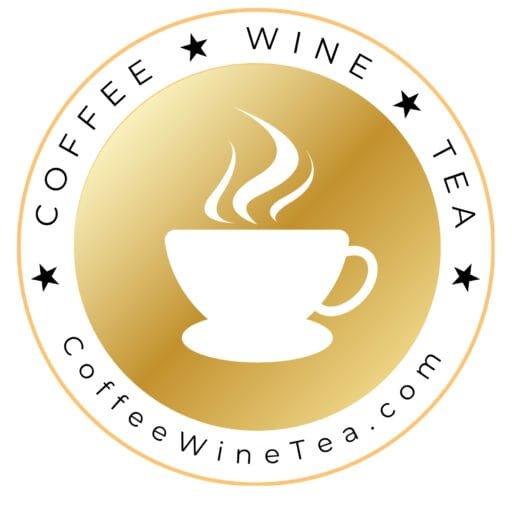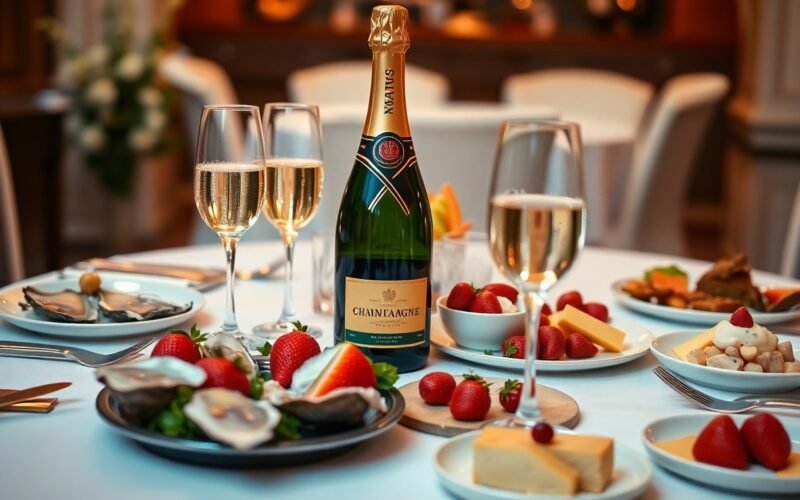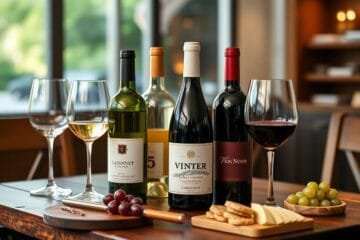Most champagne lovers don’t realize the impact that food pairings can have on enhancing your tasting experience. By understanding how to match the right dishes with your bubbly, you can unlock hidden flavors that elevate each sip. Get ready to explore the depths of your favorite sparkling wine with expert guidance that will transform your next gathering into a memorable affair. For detailed insights, check out these Expert Tips to Pair Champagne with Food and enhance your palate today.
Key Takeaways:
- Pairing Champagne with the right foods can enhance its unique flavors, making it more enjoyable and complex on the palate.
- Consider the style of Champagne—whether it’s brut, rosé, or vintage—as different styles complement various types of dishes, from seafood to desserts.
- Experiment with unexpected pairings, such as spicy cuisine or rich cheeses, to discover new taste experiences that highlight the versatility of Champagne.
The Art of Flavor Pairing: A Gastronomic Journey
Delving into the art of flavor pairing invites you to explore the textures, aromas, and nuances of both food and Champagne. Each sip reveals an intricate tapestry of tastes that can transform your dining experience. From the delicate effervescence of a non-vintage Brut to the rich complexity of an aged vintage, understanding these unique characteristics will pave the way for delightful culinary adventures.
Exploring the Compounds in Champagne
Champagne is a complex blend of various aromatic compounds that contribute significantly to its flavor profile. Notably, esters, which are formed during fermentation, impart fruity notes, while phenolic compounds bring depth and structure. These elements can vary widely between producers, resulting in distinctive tasting experiences that interact harmoniously with your meal of choice.
The Role of Terroir and Vintage in Flavor Profiles
The terroir, or the environmental factors affecting grape cultivation, plays a vital role in Champagne’s flavor complexity. Variations in soil composition, climate, and vineyard location contribute to the unique characteristics of each vintage. For example, warmer vintages might produce richer, fruitier Champagnes, while cooler years often yield more mineral-driven selections. As you savor different vintages, you’ll start to appreciate how these factors shape the wine’s overarching flavor narrative.
Understanding vintage characteristics can enhance your appreciation for each bottle. For instance, a 2008 vintage, acclaimed for its long aging potential, often presents vibrant acidity and structured fruit, making it ideal for pairing with rich dishes like foie gras or butter-poached lobster. Conversely, a 2014 vintage, marked by cooler conditions, offers a more delicate profile, pairing beautifully with lighter fare such as scallops or sushi. Each sip of Champagne serves as a reminder of the land and weather that shaped its production, enriching your culinary pairing journey.
Elevating Your Pairing Game: Expert Strategies
To truly elevate your champagne pairing game, consider how your choices amplify the intrinsic qualities of the sparkling wine. Start by exploring the region of the champagne, as local culinary traditions often provide the best matches. Get adventurous with contrasting flavors, such as pairing an aged vintage with a spicy dish or opting for buttery cheeses alongside a crisp brut. Playing with these elements can unlock a symphony of flavors, transforming your tasting experience into a remarkable celebration of taste.
The Science of Sweetness: Balancing Acidity and Sugar
Finding the right balance between acidity and sugar is vital for a harmonious pairing. Sweet champagnes, such as Demi-Sec, complement spicy Asian dishes beautifully, while a high-acid brut pairs well with rich, fatty foods like fried chicken. To enhance your experience, pay attention to the sweetness of your dish and opt for a champagne that offers a counterpoint, allowing both the food and the wine to shine.
Texture and Mouthfeel: Enhancing the Champagne Experience
The texture of champagne plays an integral role in your tasting experience, affecting how flavors meld on your palate. Consider how the creaminess of a Champagne’s mousse interacts with a dish’s elements: a high-quality champagne with fine bubbles pairs remarkably with oysters, their brininess enhancing the wine’s crispness. Alternatively, the lusciousness of a vintage champagne can elevate the experience of a velvety dessert, providing an enticing contrast that lingers. Explore various textures that create memorable pairings, allowing your palate to discover new dimensions of flavor.
Decoding the Perfect Matches: Food and Champagne Relationships
Understanding how to pair food with Champagne opens the door to an extraordinary dining experience. The effervescence and acidity of Champagne can provide a stunning counterpoint to various flavors, enhancing both the beverage and the dish. Whether you opt for a brut, rosé, or demi-sec, consider how your choices interact with the dish’s texture, saltiness, and sweetness to achieve a harmonious balance.
From Fruit to Fowl: Comprehensive Pairing Suggestions
Pair juicier Champagnes, like a robust vintage or a fruity rosé, with fresh seafood dishes such as oysters and sashimi. Alternatively, a bolder brut can elevate rich, roasted fowl like duck, where its acidity cuts through the fat, enhancing each bite. For vegetarian dishes, consider pairing with herbal or citrus profiles that mirror the Champagne’s own aromatic elements.
Sweet Temptations: Desserts That Elevate Bubbles
Pairing Champagne with desserts enhances the joy of both the bubbly and the sweet treat. Opt for creamy desserts like panna cotta or a delicate fruit tart that can bring out the natural fruitiness of the Champagne while complementing its effervescence. Consider a rich chocolate mousse with a demi-sec Champagne to balance the sweetness effortlessly.
Exploring desserts that enhance your Champagne experience opens up delightful possibilities. A classic choice is the ever-popular strawberry shortcake; the acidity in a brut rosé beautifully complements the sweetness of ripe strawberries while the lightness of the cake offers an ideal texture contrast. Furthermore, citrus-infused treats, like a lemon tart, can provide a zesty edge that resonates with the Champagne’s vibrant bubbles, making each sip a refreshing interlude to the sweetness. With the right pairing, even humble desserts can shine alongside a glass of your expertly chosen Champagne.
Breaking the Rules: Innovative Pairing Ideas
Stepping outside traditional pairing norms can lead to exhilarating flavor combinations that amplify your Champagne experience. Think beyond classic pairings—consider savory dishes like rich mushroom risotto or even spicy Asian cuisine that can enhance Champagne’s acidity. To explore even more adventurous options, take a look at Champagne and Dessert Pairings: The Essential Guide to elevate your palate even further.
Unexpected Ingredients That Play Well with Champagne
Surprising ingredients can transform your Champagne pairings into memorable culinary adventures. Savory pastries, such as a flaky goat cheese tart, bring out the wine’s bright notes, while a selection of artisanal cheeses with bold flavors can also create beautiful contrasts. Even spicy or smoky elements, like chorizo or chipotle, can highlight the Champagne’s effervescence and complexity, making unexpected connections that delight your senses.
Regional Cuisine: How Culture Shifts Pairing Norms
Cultural backgrounds greatly influence how people enjoy Champagne. For instance, in the Champagne region itself, you’ll find locals pairing their bubbly with regional specialties such as escargots or creamy cheeses, reflecting a deep understanding of the wine’s nuances. As you travel, you might discover pairing traditions that emphasize the marriage of local flavors with Champagne’s unique qualities, opening your eyes to a world of exciting combinations.
Exploring regional cuisine can redefine your approach to Champagne pairings. In Asian cultures, dishes like sushi and sashimi paired with fine bubbly embrace the balance of freshness and texture, creating a fusion of calm yet vibrant flavors. Meanwhile, Mediterranean fare often utilizes locally sourced ingredients that complement Champagne’s effervescence; consider artisan olives or grilled seafood, marrying the wine’s crispness with the robust character of local dishes. Adopting these culturally-influenced pairings invites creativity while expanding your palate, allowing you to discover innovative combinations that honored both food and wine.
The Sensory Experience: Tasting Beyond the Bubble
Every sip of Champagne invites you to explore a symphony of flavors and aromas that go beyond just bubbles. Engaging in a detailed tasting allows you to unravel the complex layers, revealing vibrant notes of citrus, stone fruits, and even hints of brioche or almond, depending on the Champagne’s specific profile. Each glass is a gateway into the terroir, vinification methods, and unique characteristics of the house which enlivens your palate in unexpected ways. By paying close attention, you can discover the hidden depth in every sparkling drop.
Engage Your Senses: Visual and Aromatic Elements
As you prepare to taste Champagne, take a moment to appreciate its visual allure. The color, often ranging from pale straw to deeper gold, hints at its age and richness. Swirl the glass gently, allowing the bubbles to rise and form a delicate crown. Pay attention to the aromas; a few deep inhales might reveal scents of fresh peach, apple blossoms, or toasted nuts. This sensory engagement heightens your anticipation and enhances your overall tasting experience.
Creating Atmospheres: Setting the Stage for Champagne Enjoyment
Crafting the right atmosphere can elevate your Champagne experience significantly. Dim lighting, comfortable seating, and soft music create a relaxed environment where you can fully immerse yourself in the nuances of each sip. Consider serving your Champagne in elegant glassware to enhance both its visual appeal and aromatic delivery. Even the temperature plays a role—serving it chilled, between 46-50°F (8-10°C), ensures that the flavors are at their most vibrant, making the experience more pleasurable.
To deepen your enjoyment, pair your chosen Champagne with thoughtfully curated bites that complement its profile. For instance, serve lighter fare such as oysters or a fresh seafood platter if you’re savoring a brut Champagne. Arrange a beautiful charcuterie board with a mix of textures and tastes for a more interactive tasting. Set the table with accents—a fresh bouquet of flowers, colorful napkins, or even a simple charcuterie slate to bring everything together visually. All these elements will help create an unforgettable evening that celebrates the beauty and joy of Champagne.
Summing up
With these considerations, you can elevate your Champagne experience by expertly pairing it with the right foods. By understanding the distinct profiles of various Champagne styles and the flavors of complementary dishes, your palate will be delighted in new ways. Embrace the versatility of Champagne, and don’t hesitate to experiment with different combinations to unlock its hidden flavors. Soon, you’ll be impressing friends and family with your newfound expertise in Champagne pairings.
Q: What are some recommended food pairings that enhance the flavors of Champagne?
A: Champagne pairs wonderfully with a variety of foods. Some classic pairings include seafood like oysters, which complement the wine’s acidity and minerality. Creamy cheeses, such as Brie or Camembert, also work well, as the richness balances the wine’s bubbles and crispness. Think about dishes that are subtly flavored, such as chicken in a light sauce or pasta with a lemon cream sauce, as these can elevate the wine’s hidden notes. Additionally, sweeter desserts like fruit tarts or even dark chocolate can highlight subtle flavors in more complex Champagnes.
Q: How can the temperature of Champagne affect its flavor profile?
A: The serving temperature of Champagne plays a significant role in the tasting experience. Ideally, Champagne should be served chilled, around 45-50°F (7-10°C). This temperature allows the bubbles to remain vibrant while highlighting the wine’s acidity and freshness. If Champagne is too cold, it can mask its aroma and flavor complexity. Conversely, serving it too warm can make it taste flat. To unveil the flavors effectively, place the Champagne in an ice bucket or fridge for a few hours before serving, ensuring you achieve the perfect temperature.
Q: Are there specific regions in Champagne that produce unique flavor profiles?
A: Yes, different regions within the Champagne area produce distinct flavor profiles due to variations in soil types, climate, and grape varieties. For instance, the Montagne de Reims is known for its Pinot Noir, which can give Champagne a robust and fruity character. Conversely, the Côte des Blancs is famous for its Chardonnay, producing wines with elegance and floral notes. The Aube region, primarily influenced by Pinot Blanc and Pinot Noir, often yields flavors that are more earthy and robust. Exploring these regional differences can unlock a world of unique tastes and experiences in Champagne.




